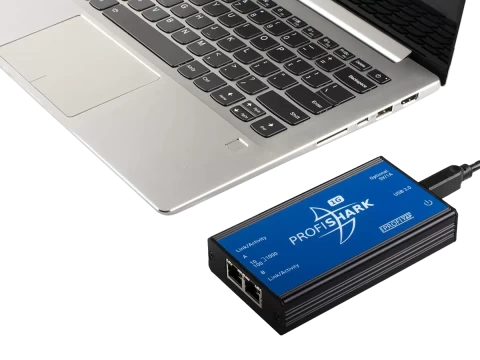-
Call Us:1.800.561.4019
Newsletter
For a Free Quote...
Latest Blog Posts
Blog Categories
Telnet Network News
Infosim explains how the SaaS model of Network & Services Management can transform your IT operations
It is really next to impossible to avoid hearing about how "The Cloud" is transforming business everywhere. Well-known technology companies from the old guard like IBM, Oracle, Microsoft, and Adobe, to established tech powerhouses Google and Amazon, to pretty much every new hot startup like Cloudera are all promoting how they are using the cloud to deliver their product using a SaaS delivery model. Infosim® is seeing this trend start to take hold in the Network & Services Management and IT Service Assurance space.
Our customers want to know if they would benefit from using a cloud/SaaS monitoring solution. So, why the big push to SaaS and away from traditional enterprise software sales? Well, from a business standpoint a recurring revenue model is preferred by salespeople and Wall Street alike. It guarantees a revenue stream in the future while also making the customer interactions a little more "sticky" (to use a silicon valley term). But, while that may be great for the technology company, can the same be said for the end-user? Do their customers see an equal, or even greater, benefit from switching from a long-term contract to a more on-demand model? This article seeks to investigate the customer side of the equation to see if the change to SaaS really is a win-win for both the vendor and the customer.
1. Cost
Let's begin by looking at cost. Make no mistake; the bottom line is always the most important factor in any comparison of delivery mechanisms. If customers can receive the same operations success at a lower price point, they will go that way every time.
The cost analysis can be somewhat complicated because while the entry price is always significantly lower when purchasing software via SaaS, you have to also think about how that cost might add up over time if you continue to use the software for a long period of time. Thankfully, these types of cost analyses have been studied in depth over the last few years and the verdict is very clear, SaaS Total Cost of Ownership (TCO) is lower than the traditional way of purchasing. Most models have come to the conclusion that SaaS reduces total cost (including maintenance, upgrades, personnel, etc.) to between 35% and 50% over the cost of traditional on-premise application systems. This cannot be ignored and is (and will most probably continue to be) the main driver behind the explosion of SaaS deployments.
2. Ease of deployment
The second most popular reason often cited for moving to SaaS is ease of deployment. This really comes down to the fact that when implementing a SaaS model, the end-user typically has to deploy much fewer compute and storage resources vs an on-premise application. Fewer (or zero) servers, databases, storage arrays, etc. This means a smaller datacenter footprint, which means less power, space, cooling, and everything that goes with managing your own datacenter resources. These factors have cost implications in their own right but notwithstanding financial benefits this reduction in infrastructure means a much lower physical burden on the overall IT service organization. Many see this benefit as having an equal if not larger overall impact to the end-user as the pure financial reduction.
3. Increased flexibility
The third-biggest driver of SaaS from the customer point of view is typically thought to be the increased flexibility that this model delivers. Under the old model, once you purchase a software feature set, you are stuck with what you have committed to. If your needs change, you typically have to eat those sunk costs and then buy more/newer features to meet your changing needs. Conversely, with SaaS you can very rapidly turn features on or off, scale up or down and generally make changes to your systems almost on the fly. This makes management much more comfortable committing to a solution when they know that if their needs change quickly, their software vendor can change with them.
4. Availability
When evaluating any solution, one of the sometimes overlooked but important "abilities" to take into consideration is availability. The concept is simple, if the software is unavailable, then your users cannot get their jobs done. The cost of downtime for manufactures, financial institutions, and most other businesses can be staggering. It can be the difference between success and failure. This is why most companies spend a lot of time and money on creating disaster recovery plans, geo-redundant systems and other solutions to ensure availability. SaaS has an inherent advantage due to the typically large scale of the software solutions global footprint. AWS from Amazon, Azure from Microsoft, and others have spent huge sums of money to build out global datacenters which have more redundancy than a typical organization could afford to build on their own. Even very large companies that could potentially build out these datacenters have begun to move their systems to the cloud when they realize that advantages outsourcing availability.
5. Expertise
Another consideration that may not come to mind initially is the availability of expertise to help solve issues or drive development of features. When many, many customers are using essentially the same services provided in the same way from the SaaS solution vendor, they tend to encounter the same problems (and find solutions) very quickly. And, those solutions tend to get posted to user community websites or YouTube etc. almost immediately. This means that as an end-user, when you have an issue, you can typically go online and find a fix or training almost immediately. This speeds up time to resolution dramatically.
6. Security
Many initially see security concerns as a reason against moving to the cloud. They see their very important data as being kept someplace outside their control and open to attacks and hackers, etc. However, the truth is that if you investigate most of the major well-known data breaches over the last few years; you see that the majority of them have happened to organizations that have been breached internally and not via large-scale cloud infiltrations. So many smaller and medium sized organizations do not have the security expertise or budget to effectively block the advanced threats that are commonplace today. In fact, it tends to be the large cloud providers that more effectively create a security moat around important data than a smaller company could. SaaS vendors can apply a critical security patch to all of their customer in minutes, and not have to rely on the end-user downloading and applying the fix themselves. This ultimately creates a much more secure environment for your data.
When combined, both the common features of SaaS along with some of the lesser-known benefits can add up to a complete and very positive transformation of delivering an IT service such as network management and service assurance.
Thanks to Infosim, and author Dietmar Kneidl
When you subscribe to the blog, we will send you an e-mail when there are new updates on the site so you wouldn't miss them.






Comments